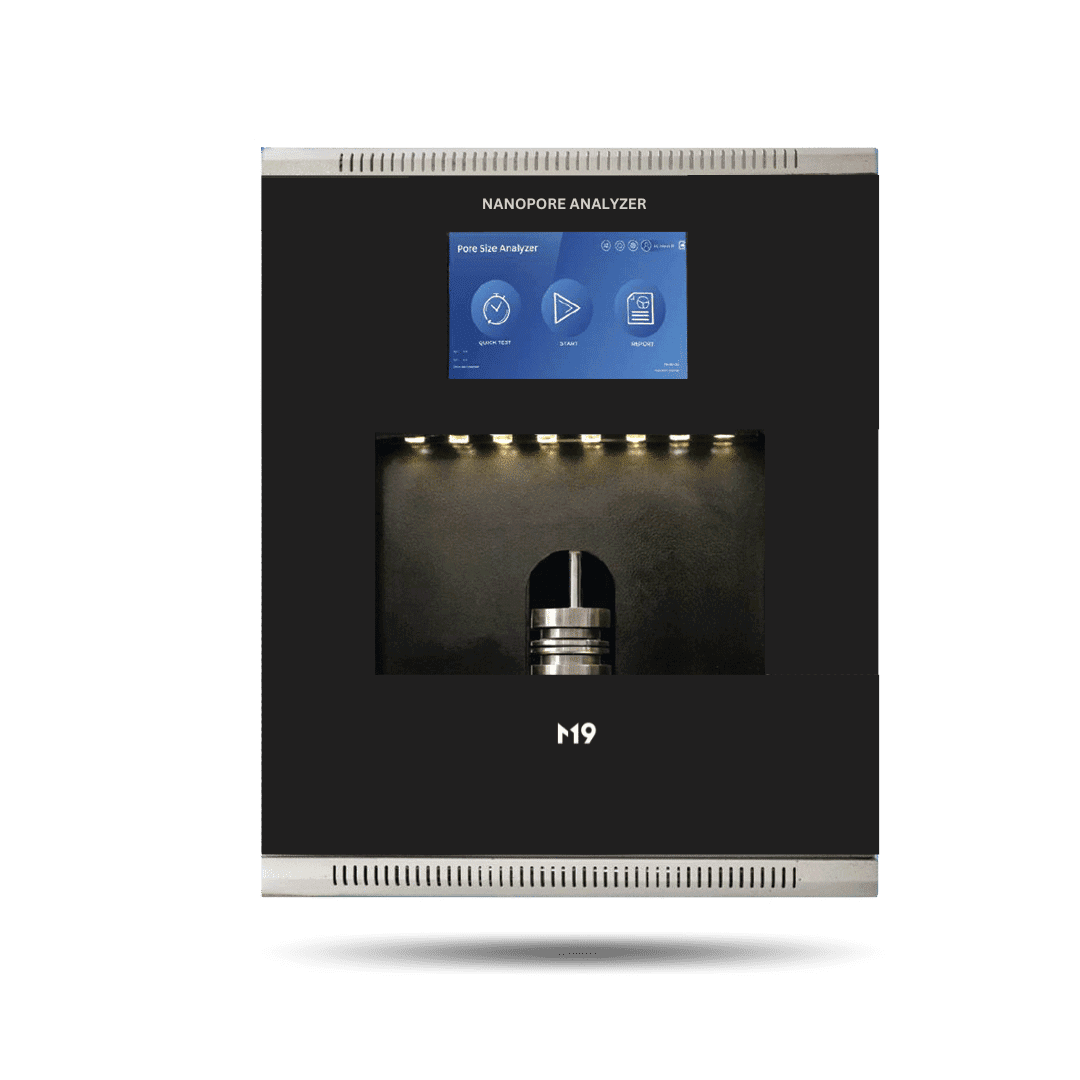NANOPORE ANALYZER

CUSTOM MADE FOR TECHNICAL TEXTILE INDUSTRY
Standard: ASTM F316, ASTM D6767
Test Range: 0.01-10 microns
Test Duration: 1-3 minutes
Precision: 0.01% F.S.


TECHNOLOGY

High Pressure Capillary Flow/Gas-liquid Porometry is the most common method for characterizing the Pore Size of coated/laminated . Bubble Point is based on the fact that liquid is held in the pores of the test media. Using Capillary Flow Porometry, the simple principle of high gas pressure to force a wetting liquid out through nanopores in a coated fabric media. The pressure at which pores empty is inversely proportional to the pore size, smaller pores require a higher pressure than larger pores. The resulting volumetric flow of gas through emptied pores is also measured. Pore size is then calculated using the Young-Laplace equation.
APPLICATIONS

- Medical Textiles
- Membranes
- Protective Textiles
- Fabric Filters
- Coated and Laminated Fabrics
- PPE Coveralls
- Bio Suits
- NBC suits
CUTTING EDGE DESIGN

SIMPLE | INTELLIGENT | MORE INTEGRATED
The hardware system has evolved into a highly sophisticated instrument with increased ease-of-operation, data accuracy, reliability, and end-to-end automated operation.
ADVANCED SOFTWARE

AI BASED | DYNAMIC REPORTS | EASY TO USED
Unprecedented visualization and collaboration using new M19 software control program and test report program. Experience the power of A.I based cognitive software control program that virtually eliminated user bias throughout the data acquisition process and data interpretation, redefining the way data is generated and consumed by your team.
HIGH PERFORMANCE COMPUTING

INCREASED PRECISION | ACCURACY | REPRODUCIBILITY
M19 instruments deploy cutting-edge ARM7 group of 32-bit RISC ARM processor cores licensed by ARM Holdings for microcontroller use, which not only enhances the precision of our analyzers but also ensures consistent, reliable results across all testing platforms. With our technology-centric approach, we strive to set a new standard for material characterization, promoting credibility and trust in every test conducted.
FAQ's
1 - WHAT IS A NANOPORE ANALYZER?−
- A Nanopore Analyzer, also known as a Pore Size Analyzer, is a scientific instrument used to determine the pore size and distribution and related properties of nanoporous fabrics. It is commonly employed in various applications such as protective textiles, fabric filters, coated and laminated fabrics, PPE coveralls,etc.
2 - HOW DOES NANOPORE ANALYZER WORK?+
3 - WHO USE NANOPORE ANALYZER?+
4 - WHAT ARE THE BASIC REQUIREMENTS FOR NANOPORE ANALYZER USAGE?+
5 - HOW WILL NANOPORE ANALYZER BENEFIT MY COMPANY?+


